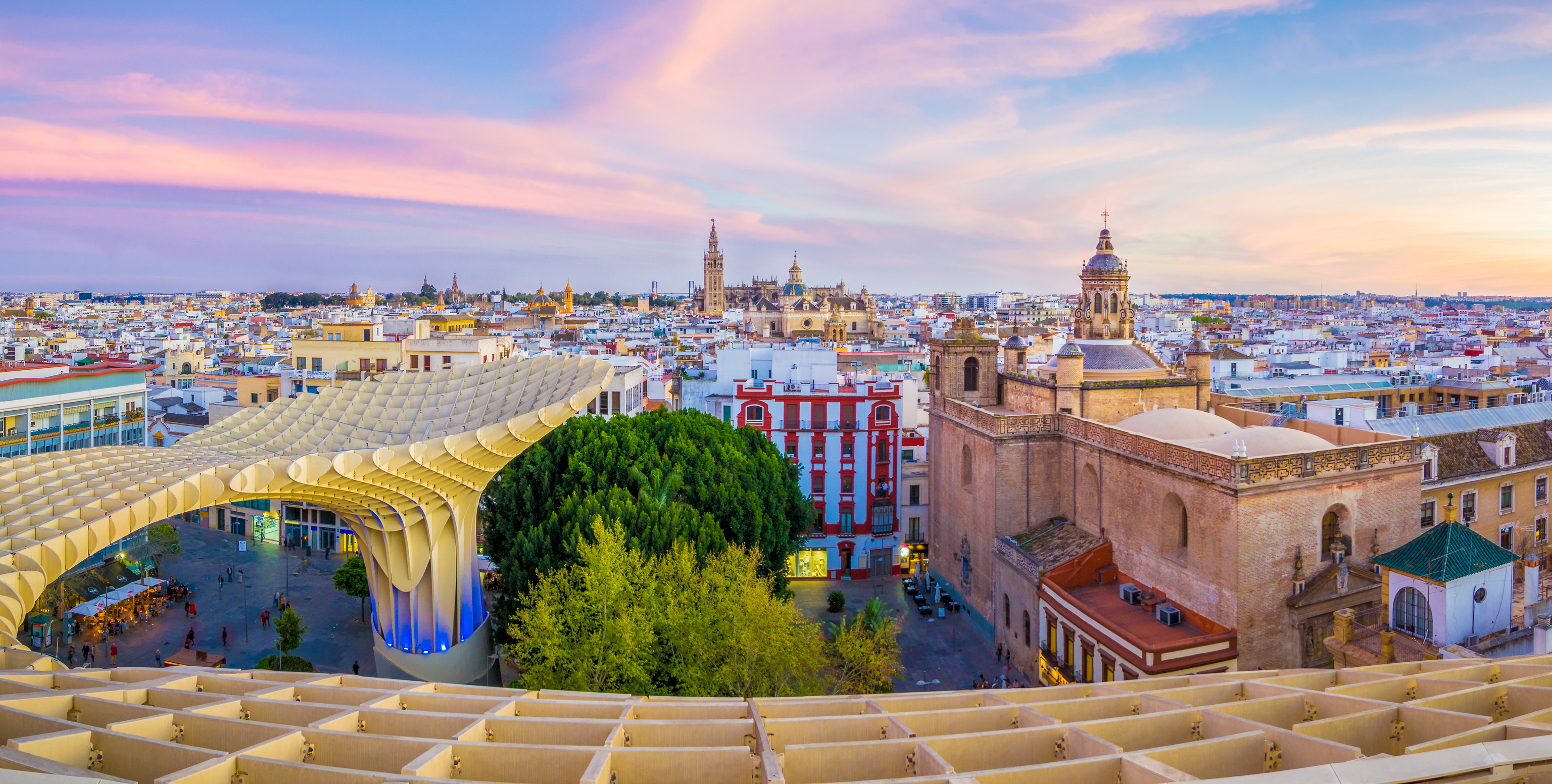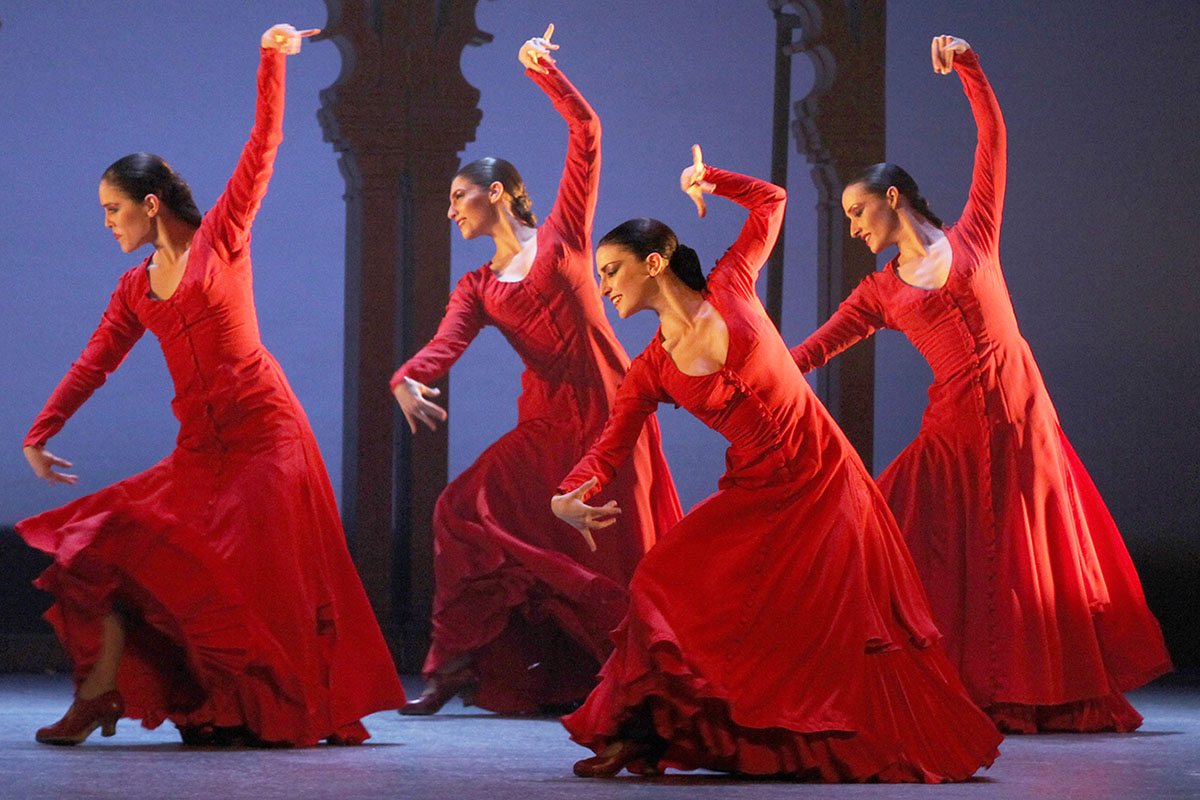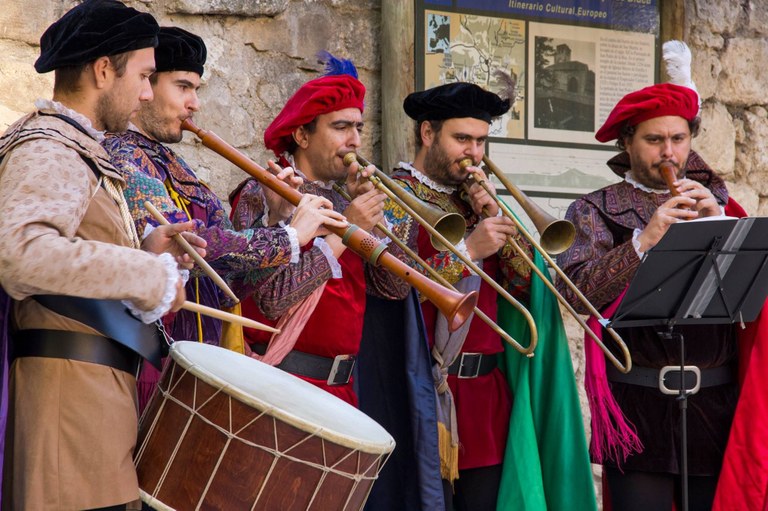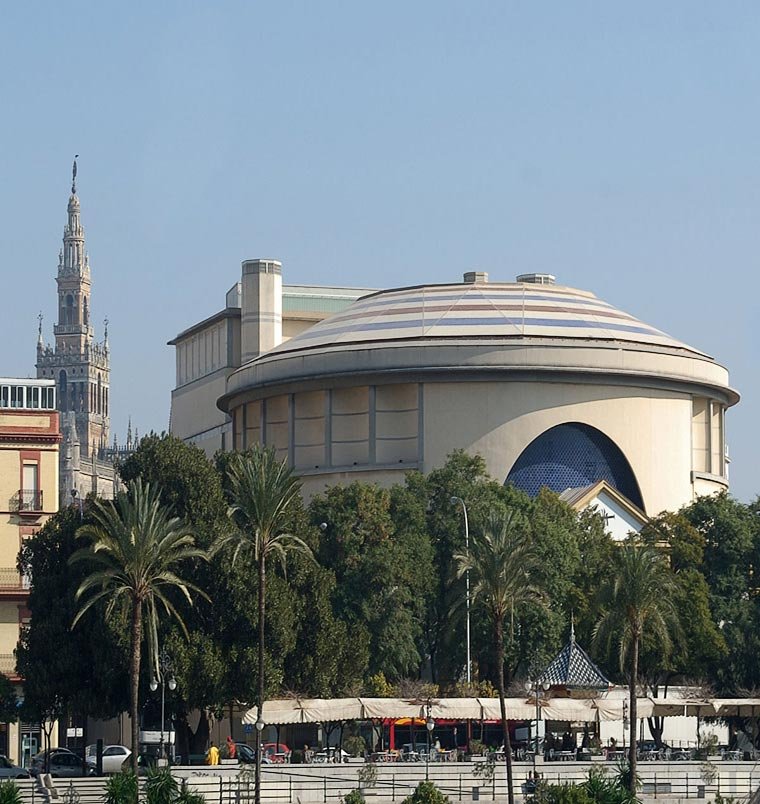Spain, a country known for its rich history, diverse culture, and stunning landscapes, is home to many enchanting cities. One such city that stands out with its unique charm is Sevilla, the capital of Andalusia. On the banks of the Guadalquivir River, Sevilla is a city where the past and the present coexist harmoniously, creating a tapestry of experiences that captivate every visitor.
In this blog post, we embark on a journey with Maria Lopez, a seasoned traveler and a passionate writer, who calls Malaga her home. Maria, with her deep-rooted love for her Spanish heritage, takes us from the sun-drenched beaches of Malaga to the vibrant streets of Sevilla. She unravels the rich history of Sevilla, explores its diverse culture, highlights the must-visit places, and guides us on how to reach Sevilla from Malaga. So, buckle up and get ready to be transported to the heart of Andalusia, where every corner tells a story, every street echoes with laughter, and every moment is a celebration of life.

Maria Lopez Guevara
“Sevilla a Madrid near Malaga”
Meet Maria Lopez, a seasoned traveler and a passionate writer. Born and raised in Malaga, Maria has a deep love for her Spanish roots. She has spent years exploring the nooks and crannies of Spain, with a particular fondness for Andalusia. Maria has a knack for capturing the essence of a place in her writings, making her readers feel as if they are right there with her. Today, she takes us on a journey from her hometown, Malaga, to the enchanting city of Sevilla.
The Rich History of Sevilla
Sevilla, a city that resonates with tales of civilizations past, has a history that is as rich as it is diverse. Its story begins long before the Roman era, with its roots tracing back to the ancient Iberian civilization.

Iberian Beginnings
The earliest records of Sevilla, known then as an Iberian town, date back to the 8th century BC. Located in the neighborhood of the present-day street, Cuesta del Rosario, Sevilla was strategically situated on an island in the Guadalquivir River. This unique location made it a hub for trade and commerce, attracting various civilizations over the centuries.
Roman Influence
Under Roman rule, the city was named Hispalis and began to flourish from the 2nd century BCE onwards. The Romans left an indelible mark on Sevilla, with their architectural prowess evident in the ruins and remnants scattered throughout the city. Hispalis grew in prominence as an administrative center, playing a pivotal role in the Roman Empire’s southern region.
Your Spanish Journey Starts Here: Buenos Aires, Malaga, or Anywhere You Are
Are you ready to embark on a language adventure that’s as exciting as it is educational? Whether you’re yearning for the vibrant city life of Buenos Aires, the sun-drenched charm of Malaga, or the convenience of online learning, we’ve got just the ticket!

Learn Spanish in Argentina
Dive into the heart of Argentina with our Spanish school in Buenos Aires. Experience the city’s pulsating energy, rich history, and captivating culture as you master the Spanish language. Buenos Aires is calling – will you answer?
www.vamospanish.com/spanish-school-buenos-aires/

Learn Spanish in Malaga
Imagine yourself soaking up the Andalusian sun as you learn Spanish in Malaga. Our school offers a unique blend of top-notch education and laid-back beach vibes. It’s not just a language course – it’s your passport to the Mediterranean lifestyle!
www.vamospanish.com/spanish-school-malaga/

Learn Spanish Online
Can’t travel right now? No problem! Our online Spanish classes bring the language, culture, and fun right to your living room. Engage with our experienced teachers and enjoy interactive lessons from wherever you are in the world.
www.vamospanish.com/online-spanish-classes/
Islamic Era and the Taifa of Seville
The city underwent a significant transformation after the Islamic conquest in 711, adopting the name Ishbiliyah. The Moors, with their advanced knowledge in various fields, brought about architectural, cultural, and scientific revolutions in Sevilla. The city’s skyline began to change, with minarets, palaces, and fortresses dotting the landscape. Following the collapse of the Caliphate of Cordoba, Sevilla rose to prominence as the center of the independent Taifa of Seville. This period saw the city at its cultural and economic zenith, with art, literature, and trade flourishing.
The Golden Age
Sevilla’s history took a monumental turn with the discovery of the New World. The 16th century ushered in what is known as Sevilla’s Golden Age. As explorers returned with treasures from the Americas, Sevilla became a gateway to the riches of the New World, making it one of Europe’s most prosperous cities. This newfound wealth funded the construction of grand edifices, including the iconic Seville Cathedral and the Royal Alcazar, both of which stand as testaments to the city’s opulent past.
Also read our blog about: The Influence of Moorish Architecture in Andalusian Cities
Legacy and Modern Sevilla
Today, Sevilla is a harmonious blend of its storied past and vibrant present. As one walks through its cobbled streets, the echoes of history are palpable. From the Roman ruins to the Moorish palaces, from the Gothic cathedrals to the modern plazas, Sevilla is a living museum, narrating tales of glory, conquest, and resilience.
Frequently Asked Questions about Seville
The Cultural Mosaic of Sevilla
Flamenco: Sevilla’s Heartbeat and Soul
Step into the vibrant streets of Sevilla, and you’ll quickly find yourself enveloped by the passionate rhythms of Flamenco. This isn’t just another dance or a mere musical genre; it’s the lifeblood of the city, the very essence of Andalusian spirit. Imagine haunting melodies that tell tales of centuries-old romances, powerful vocals that resonate with the joys and sorrows of generations past, and fierce dance movements that seem to set the very cobblestones aflame with emotion.
From the depths of profound sorrow to the ecstatic peaks of joy, Flamenco captures a spectrum of emotions like no other art form. It’s a dance that speaks, a song that moves, and a tradition that has been the heartbeat of Sevilla for centuries. As you wander through the city, you’ll come across the iconic tablaos – traditional venues where Flamenco comes alive in its most authentic form. Here, under dim lights and amidst the scent of aged wood and wine, performers pour their souls onto the stage, offering an experience that’s raw, real, and absolutely riveting.
Also read our blog about: Flamenco’s Enigmatic Symphony: A Brit’s Sojourn Through the Vortex of Passion
But Flamenco in Sevilla isn’t just confined to these stages. It’s in the spontaneous performances that erupt in plazas, the passionate discussions about the art form in local cafes, and the rhythm that every Sevillian seems to carry in their step. It’s a cultural treasure, a living legacy, and an invitation to experience the city’s soul.
Tapas: Savoring Sevilla One Bite at a Time
When you’re in Sevilla, you’ll quickly notice the enticing smells of food, especially from the tapas bars. Tapas are small dishes that are popular in Sevilla and are a big part of the local dining culture.
Sevilla’s tapas bars are lively places where you can try a variety of dishes. You’ll find options like albondigas, which are spicy meatballs, or the classic Spanish tortilla. Each dish has its own background, influenced by Sevilla’s diverse history.
In Sevilla, eating tapas is also about socializing. It’s common to meet with friends at a tapas bar, chat, and enjoy dishes like chorizo, gambas al ajillo, or patatas bravas. Many locals have their favorite tapas spots, some of which have been around for generations.
If you decide to go on a tapas crawl in Sevilla, you’ll get to experience a mix of traditional and modern dishes. It’s a great way to get a taste of the city’s culinary history.
Top 3 Tapas in Sevilla:
Cazón en Adobo
A direct descendant of the shark dishes loved by ancient Mediterranean cultures, this dish features shark cubes marinated with vinegar, cumin, oregano, garlic, and salt. They are then coated in chickpea flour and fried in extra virgin olive oil.

Pescaíto frito
A testament to Sevilla’s mastery in frying, this dish consists of various fish, like pijotas and boquerones, lightly coated in a special flour mix and fried to perfection. The result is a crispy exterior with a juicy interior.

Sopas frías (and gazpacho)
Cold soups have been a part of the region’s culinary tradition since Roman times. The introduction of ingredients from the Americas transformed these soups into what we know today as gazpacho. This cold soup is a refreshing blend of tomatoes, peppers, cucumbers, onions, olive oil, and vinegar.
Also read our blog about: Spain’s Cold Soups: Discovering Salmorejo and Gazpacho
Festivals: The Heartbeat of Sevilla
Sevilla, with its rich history and vibrant culture, hosts a myriad of festivals throughout the year. Each festival, deeply rooted in tradition or contemporary influences, offers a unique experience for both locals and tourists. Let’s delve into some of the city’s most celebrated festivals:
Feria de Abril: Sevilla’s Spring Celebration
Every April, the Los Remedios neighborhood transforms into a festive haven for the Feria de Abril. This week-long event is a spectacle of color, music, and dance. Streets are lined with casetas (decorative tents) where families and friends gather to enjoy traditional music, dance Sevillanas, and savor classic Andalusian dishes. Women don flamenco dresses, and horse-drawn carriages parade through the fairground, making it a visual treat.
Bienal de Flamenco: A Tribute to Andalusian Heritage
Held biennially between September and October, the Bienal de Flamenco is a testament to Sevilla’s deep-rooted flamenco tradition. The city buzzes with energy as renowned flamenco artists from around the globe converge to showcase their talent. From soul-stirring cante (singing) to mesmerizing baile (dance), this festival is a deep dive into the world of flamenco.

Festival de Artes Escénicas de Sevilla: Celebrating Performing Arts
Every November, Sevilla becomes a hub for performing arts enthusiasts. This festival, spanning various venues across the city, features a plethora of performances, including theater, dance, music, and comedy. It’s a platform where traditional art forms meet contemporary expressions, offering something for everyone.

Interestelar Sevilla: Modern Music Meets Tradition
In May, the Interestelar Sevilla music festival takes center stage. Spanning two days, this event features a diverse lineup of contemporary artists across genres. Set against the historic backdrop of Sevilla, this festival is a blend of modern rhythms and traditional vibes.

Festival de Música Antigua de Sevilla: Echoes from the Past
Between March and April, the city resonates with the melodies of the Renaissance and Baroque eras. This internationally acclaimed festival is a treat for classical music aficionados, with performances that transport listeners back in time.

Noches en los Jardines del Real Alcázar: Music Under the Stars
Starting in June, the Royal Alcázar’s gardens come alive with music. National and international artists perform in this historic setting, making for magical summer nights. The blend of music, history, and nature offers a unique experience.

Festividad de San Fernando: Honoring the Patron Saint
On May 30th, Sevilla pays homage to its patron saint, San Fernando. The day is marked by religious processions, with the highlight being the opening of the urn containing San Fernando’s remains at the Cathedral for public veneration.
These festivals, each with its distinct charm, showcase the multifaceted cultural landscape of Sevilla. Whether you’re drawn to traditional celebrations or contemporary events, Sevilla’s festival calendar promises enriching experiences.
Architectural Wonders: Chronicles in Stone
Sevilla, a city with a rich tapestry of history, is home to some of the most awe-inspiring architectural wonders in Spain. These structures, each with its unique story, stand as testaments to the city’s diverse cultural influences and its evolution over the centuries.
Seville Cathedral: As the third-largest church in the world and the largest Gothic cathedral, the Seville Cathedral is a marvel of medieval architecture. Its intricate facades, soaring bell tower (La Giralda), and vast interiors showcase the grandeur of Gothic design. The cathedral also houses the tomb of Christopher Columbus, adding to its historical significance.

Also read our blog about: Malaga’s Cathedral: All you Need to Know About “La Manquita”
Plaza de España: A masterpiece of the Renaissance Revival style, the Plaza de España is known for its semi-circular building, bridges, and canal. The structure, adorned with colorful tiles representing different Spanish provinces, offers a panoramic view of Spanish history and culture.

Metropol Parasol (“Las Setas”): A modern architectural wonder, the Metropol Parasol is a wooden structure located in La Encarnación square. Often referred to as “Las Setas” (The Mushrooms), this contemporary design contrasts with Sevilla’s traditional architecture, making it a must-visit for architecture enthusiasts.

Real Alcázar: A UNESCO World Heritage site, the Real Alcázar is a palace complex that showcases a blend of Christian and Mudéjar architecture. With its intricate tilework, lush gardens, and ornate rooms, the palace is a reflection of Sevilla’s Moorish heritage.
Torre del Oro: On the banks of the Guadalquivir river, the Torre del Oro is a dodecagonal military watchtower. Originally built by the Almohad dynasty, this tower has served various purposes over the centuries, from a defensive structure to a prison and now a naval museum.
Italica: Located just outside Sevilla, Italica is an ancient Roman city. Some of its most notable structures include the Amphitheatre, which could seat up to 25,000 spectators, and the House of Trajan. The ruins provide a glimpse into Roman architecture and urban planning.

Sevilla’s Vibrant Nightlife
Clubs and Discos: Dance the Night Away
For those looking to dance the night away, Sevilla offers a range of clubs playing everything from the latest international hits to classic Spanish tunes. Clubs like Uthopia and Antique Theatro are known for their lively atmosphere and attract a young, energetic crowd. Most clubs in Sevilla start filling up post-midnight and stay open until the early hours of the morning, ensuring a night full of dancing and fun.
Also read our blog about: Experience the Magic of Torremolinos: Top 10 Must-Do Activities
Rooftop Bars: Panoramic Views and Cocktails
For a more relaxed evening with stunning views of the city, head to one of Sevilla’s rooftop bars. These venues, often located atop hotels, provide panoramic views of the city’s skyline, illuminated landmarks, and the shimmering Guadalquivir River. Enjoy a cocktail as you take in the sights and sounds from above, making it a perfect way to end your evening.
Must-Visit Places in Sevilla
A Culinary Gem: Eslava Restaurant
Sevilla, a city known for its rich culinary heritage, boasts numerous eateries that offer delectable dishes. Among them, Eslava Restaurant shines brightly as a beacon of gastronomic excellence. Nestled in the heart of Sevilla, Eslava is not just a restaurant; it’s an experience.
Upon entering, visitors are greeted with a cozy ambiance that perfectly complements the culinary journey they are about to embark on. The restaurant seamlessly marries traditional Andalusian flavors with contemporary culinary techniques, resulting in dishes that are both familiar and innovative. Their tapas menu is a testament to this, offering a range of dishes that surprise and delight the palate.
Also read our blog about: The 10 best restaurants in Málaga, Spain
One of the standout dishes that has garnered acclaim is their slow-cooked egg with mushroom caviar. This dish, a symphony of flavors and textures, showcases the chef’s dedication to crafting dishes that resonate with diners. Another crowd favorite is the honey-drizzled bluefin tuna, a dish that celebrates the bounty of the sea while paying homage to Andalusian culinary traditions.
But it’s not just the food that makes Eslava special. The staff, with their warm hospitality, ensures that every diner feels at home. They are knowledgeable about the menu and are always ready to offer recommendations, ensuring that each guest’s culinary journey is unique.
Historical Marvel: The Giralda Tower
Sevilla, a city steeped in history and culture, boasts a plethora of architectural masterpieces that narrate tales of its illustrious past. Among these, the Giralda Tower stands tall, both literally and figuratively, as a testament to the city’s rich heritage.
Dominating the city’s skyline, the Giralda Tower is not just an architectural marvel but also a symbol of Sevilla’s layered history. Originally conceived as a minaret in the 12th century during the Almohad dynasty’s reign, it was a significant representation of Moorish craftsmanship and design. Intricate patterns and designs adorn its facade, bearing witness to the artistic prowess of the era.
However, as the tides of time shifted and the Reconquista reclaimed Sevilla, the Giralda underwent transformations. In the 16th century, the tower was repurposed as the bell tower for the majestic Seville Cathedral, one of the largest Gothic cathedrals in the world. This fusion of Moorish and Gothic architectural elements makes the Giralda a unique structure, symbolizing the confluence of cultures that Sevilla has witnessed over the centuries.
Visitors to the Giralda Tower are often left in awe, not just by its grandeur but also by the panoramic vistas it offers. As one ascends the 34 ramps leading to the top, the city of Sevilla unfolds in all its glory. From the meandering Guadalquivir River to the sprawling plazas and narrow alleyways, the view from the top is nothing short of breathtaking. It’s a vantage point that provides both a visual treat and a historical perspective, making it an essential stop for anyone visiting Sevilla.
Artistic Treasure: Museo de Bellas Artes
Sevilla, with its vibrant history and cultural richness, has always been a focal point for artistic expression. At the heart of this artistic landscape lies the Museo de Bellas Artes, a sanctuary for art enthusiasts and historians alike.
Situated in the historic Plaza del Museo, the Museo de Bellas Artes is not just any museum; it’s a journey through Spain’s artistic evolution. The building itself, a former convent constructed in the 17th century, is an architectural gem, showcasing the grandeur of Sevillian Baroque style. Its serene courtyards and ornate hallways set the tone for the artistic treasures housed within.
Also read our blog about: The Museums of Malaga: A Journey Through Art, History, and Innovation
The museum’s collection is vast and varied, encompassing a wide range of artistic styles and periods. From the intricate details of medieval religious art to the bold strokes of 20th-century modernism, every era of Spanish art is represented. Among the museum’s prized possessions are masterpieces by illustrious artists such as Zurbarán, whose works capture the essence of the Spanish Golden Age, and Murillo, known for his ethereal portrayals of religious themes. Valdés Leal’s dramatic baroque pieces further add depth to the museum’s collection, offering insights into the artistic sensibilities of the time.
Cultural Hub: Teatro de la Maestranza
Sevilla, a city celebrated for its rich tapestry of history, art, and culture, boasts venues that resonate with its vibrant spirit. Among these, the Teatro de la Maestranza stands as a beacon of cultural excellence, drawing both locals and tourists to its grand auditorium.
Situated majestically alongside the shimmering waters of the Guadalquivir River, the Teatro de la Maestranza is more than just a theater; it’s a testament to Sevilla’s commitment to the arts. Its imposing facade, a blend of modern and classical architecture, hints at the grandeur that awaits within.
Also read our blog about: Top Theatres in Spain: A Must-See Guide in your Journey
Stepping inside, visitors are greeted by opulent interiors, with plush seating, gilded details, and a magnificent stage that has witnessed countless stellar performances. The theater’s acoustics, designed to perfection, ensure that every note, whether from a haunting opera aria or a soulful flamenco guitar, reaches the audience in its purest form.
The Teatro de la Maestranza’s repertoire is as diverse as the city itself. On any given night, one might witness the grace of a ballet performance, the passion of an opera, the rhythm of a flamenco show, or the melodies of a classical concert. This versatility makes the theater a hub for various cultural events, drawing enthusiasts from all over the world.

Beyond the performances, the theater is also deeply involved in promoting the arts. Regular workshops, masterclasses, and outreach programs are organized, aiming to nurture budding talent and foster a love for the arts in the community.
In essence, the Teatro de la Maestranza is not just a venue; it’s an institution. It embodies Sevilla’s cultural ethos, offering a space where artistry thrives, and stories come to life. For anyone seeking to immerse themselves in the cultural heartbeat of Sevilla, a visit to this theater is an experience not to be missed.
Journey from Malaga to Sevilla
Sevilla, the capital of Andalusia, is a must-visit destination for anyone traveling to southern Spain. If you’re in Malaga and planning to make your way to Sevilla, you’re in for a scenic journey that offers multiple travel options.
By Car
The most direct route by car from Malaga to Sevilla is via the A45 and A92 highways. This 125-mile drive takes approximately 2.5 hours, offering travelers the flexibility to stop and explore the beautiful Andalusian countryside along the way.
By Train
For those who prefer a more relaxed mode of travel, the train is a great option. From Malaga Airport, you can take the C1 Line to the Malaga Maria Zambrano station. From there, you can catch a direct train to Sevilla. The entire journey is comfortable and offers picturesque views of the region.
As we conclude our journey, it’s clear that Sevilla is more than just a city; it’s a feeling, an experience that stays with you long after you’ve left its borders. From its rich history that whispers tales of glory and grandeur to its vibrant culture that bursts with life and color, Sevilla is a city that captures your heart and soul.
Traveling from Malaga to Sevilla is not just about reaching a destination; it’s about embarking on an adventure that unfolds with every mile. It’s about witnessing the changing landscapes, soaking in the local vibe, and creating memories that last a lifetime.
So, whether you’re a history buff, a culture enthusiast, or a wanderlust-filled traveler, Sevilla has something for everyone. And as Maria would say, “Sevilla is not just a city to visit; it’s a city to experience.” So, pack your bags, set your spirit free, and let the magic of Sevilla enchant you.






